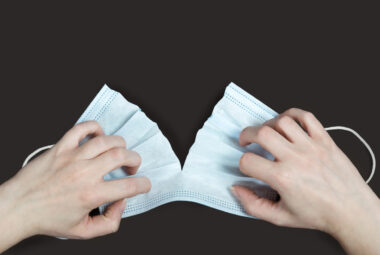
Is new matter added by combining dependent claims?
In many jurisdictions (most notably the U.S.), multiple dependency of claims is not allowed. It is therefore common to have a main claim 1, with a number of dependent claims all linked to claim 1. In the U.S., this is generally not problematic, since adding the subject-matter of a number of the dependent claims to claim 1 is typically allowed.
The European Patent Office (EPO) however takes a different view. If two dependent claims both depend only on claim 1, adding the subject-matter of both of them to claim 1 is typically considered by the EPO to add new matter (unless the specific combination is disclosed in the description). The EPO thinks that if there are no multiple dependencies, the combination of two subclaims has not been disclosed. This is the reason why it is important to use multiple dependent claims before the EPO. However, a new decision from the Boards of Appeal shows that this may not always be enough.
The granted European patent EP2909144 had 27 claims, where claims 1-18 related to a process and claims 19-27 related to a material. When the patent was opposed, the proprietor filed a new main request where the subject-matter of claims 4, 9, 11, 13 and 17 was added to claim 1. The Opposition Division accepted that the new claim 1 was supported by the application as filed, because all of these claims originally depended on each other in multiple dependencies. However, patent was still revoked due to lack of patentability in view of prior art.
The Board has taken a different view. They conclude in T 1137/21 that “Claim 1 thus corresponds to a multiple selection from a large number of lists and possibilities without a specific pointer. Contrary to the appellant’s view, the skilled person is presented with new information. While the core of the invention (e.g. as illustrated by the inventive examples) may have remained the same, the boundaries of the subject-matter to be protected have changed in a way that is not directly and unambiguously derivable from the application as originally filed, in particular in view of the large number of selections made”. In the discussion, the Board also states that “The number of selections and the number of alternatives within each selection definitely play a role”.
The Board argues that “Claim 1 is the result of a multiple selection of a very specific combination of features from different dependent claims as originally filed. These selections are made from among numerous possibilities and different degrees of preference”. It is noted in the decision that “none of the options of dependent claims 2, 3, 5 to 8, 10, 12, 14 to 16 and 18 as originally filed have been inserted into claim 1”. The Board concludes that “In view of the sheer number of possibilities, the subject-matter of claim 1 at issue is not directly and unambiguously derivable from the dependent claims, even when the general part of the description is taken into account”.
The Board states that “Claim 1 thus corresponds to a multiple selection from a large number of lists and possibilities without a specific pointer”. One could consider that the dependent claims in themselves are a pointer to what is considered to be preferred embodiments of the invention. However, it is apparently not enough for the Board that there were only 17 dependent claims, which all depended on each other. They instead stress that “the appellant has not indicated a single passage of the original application that discloses – in combination – the features of claim 1 of the main request”.
The Board in T 1137/21 does not consider case law to be diverging on this issue. After referring to the decision in T 1621/16 as stating that “the application as originally filed has to include a pointer to the combination of features resulting from the multiple selection. Such pointers can be provided by the examples if they still fall under the amended claim”, they argue that “the case underlying T 1621/16 and the case in hand are not comparable, and the conclusions of T 1621/16 cannot be applied as such to this case”. It is worth noting that the Board agreed that the examples still fell under the amended claim in the case at hand.
According to T 1137/21, it may thus not be enough to use a limited number of dependent claims with multiple dependencies to ensure that these claims can be combined – the examples given in the application may also need to specifically show the combinations of features that are to be claimed.
It may be argued that T 1137/21 could be considered to relate only to the field of chemistry, since it is in this field that selections of specific combinations of features from a large number of alternatives most often take place. However, there is nothing in the decision that explicitly limits its applicability to the field of chemistry, and (as evidenced by e.g. T 1137/21), the Boards of Appeal have previously seen fit to apply case law originating in the field of chemistry also in other fields.
It remains to be seen whether T 1137/21 relates to a specific situation without broader application, or if this decision indicates that the view on added matter when combining dependent claims has become even stricter than before at the EPO.
To find out more, please contact the author or your usual Barker Brettell patent attorney.



